![]() Does every book or movie HAVE to feature The Ultimate Big Bad (TM) to make it a good, entertaining piece of fiction? J. S. Dewes, author of opens in a new windowRubicon, joins us to talk about some of her favorite examples of media with less traditional villains. Check it out here!
Does every book or movie HAVE to feature The Ultimate Big Bad (TM) to make it a good, entertaining piece of fiction? J. S. Dewes, author of opens in a new windowRubicon, joins us to talk about some of her favorite examples of media with less traditional villains. Check it out here!
By J. S. Dewes
A child of the 90s and early aughts, I grew up in a golden age of the cinematic masterpiece known as the disaster movie. Many a night was spent binge-watching laserdiscs of Twister, Independence Day, Volcano, White Squall, Outbreak, Armageddon, Titanic, Deep Impact, need I go on.
As an introvert terrified of interpersonal conflict, the notion of a dramatic premise that didn’t require traditional antagonists spoke directly to my soul. Why bother fighting each other when you can instead band together to fight MOTHER NATURE?
So it should come as no surprise that when I started brainstorming for my debut novel The Last Watch, my instincts led me directly toward a villainless premise. As castoff miscreants and criminal soldiers, many of my characters would make decent antagonists in their own rights, yet instead my motley crew joins forces to undertake the not so small task of preventing the collapse of the universe.
While writing, I never even considered including any kind of traditional villain—my poor characters really didn’t need a Big Bad thwarting their every move with the universe itself opposing them at every turn. (That was until I realized the story was, in fact, a series, and that a more traditional antagonist may be called for as the story expands, but I digress.)
As a child, I also happened to be an avid reader, and often looked to sate my disaster movie cravings with literature. Though finds are too few and far between, I’ve discovered a few amazing novels over the years that help scratch that disaster movie itch.
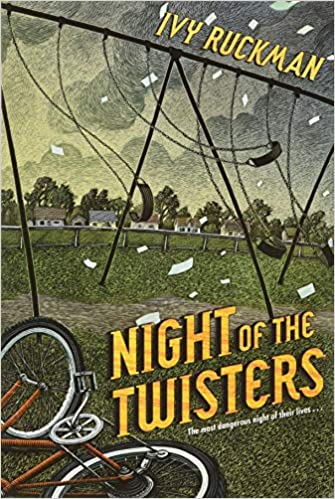 opens in a new windowNight of the Twisters by Ivy Ruckman
opens in a new windowNight of the Twisters by Ivy Ruckman
Night of the Twisters follows twelve-year-old Dan and his best friend, who are caught at home alone with Dan’s baby brother when a tornado watch is issued. They take shelter in the basement just before a tornado strikes, leveling the house. Though they survive, they have a long night ahead—it’s only the first of seven tornados that will strike before dawn.
As the first and only “disaster fiction” I came across in elementary school, I became briefly obsessed with Night of the Twisters (and its admittedly regretful made-for-TV movie of the same name—if you recall it fondly, please don’t look it up now.)
Looming tornadic activity was a staple of my Midwestern childhood summers, so I found it particularly fascinating to read such a realistic account of this kind of disaster. The warning signs and resulting storm are rendered in intense detail, and though certainly a book for young readers, it really doesn’t hold back when it comes to stakes and tension. Kids persevering without or despite adults is a common enough staple in kidlit, though I’ve not seen another set in the framework of such a realistic natural disaster. The twelve-year-old protagonist’s custody of his baby brother is enough to keep you on the edge of your seat, nevermind adding seven tornados into the mix.
opens in a new window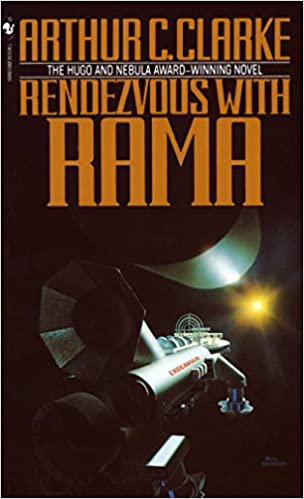 Rendezvous with Rama by Arthur C. Clarke
Rendezvous with Rama by Arthur C. Clarke
It’s the year 2131 when a mysterious, massive interstellar spacecraft arrives in the solar system. The crew of the Endeavor is sent to investigate, and within they uncover a vast alien world filled with unforeseen wonders.
As my default “what’s your favorite book” answer, Rendezvous with Rama holds a special place in my heart. It wasn’t until writing this very article that I realized that may be in large part due to the fact that it fulfills this “no-villains-needed” conflict niche I so desperately crave.
Rama brilliantly showcases two of my all-time favorite science fiction tropes: BDOs (“Big Dumb Objects”) and competent professionals just doing their jobs while making decisions they don’t get paid nearly enough to make. Both tropes naturally perform well in narratives without typical antagonists, inherently possessing plenty of hooks for conflict and tension. Together they work to even greater effect: throw your cast of competent characters at/into a BDO, pit them against any given Impossible Alien Task, and sit back to watch the struggle unfold.
The argument could be made for some late-game bureaucratic Bad Guys (whose *exhausted sigh*-inspiring actions spawn exactly the type of delightful heroic gesture our competent professionals are designed to thwart), but ultimately that all serves as a backdrop for the mainstage on which Rama shines its brightest: exploration of the wonderous unknown, doing right by humanity, and just trusting the scientists, FFS.
opens in a new window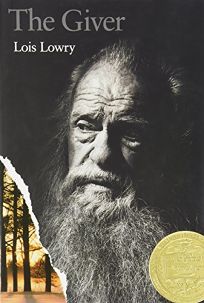 The Giver by Lois Lowry
The Giver by Lois Lowry
Surely you know this one, but just in case: The Giver follows twelve-year-old Jonas, living a peaceable if not bland life in an apparent utopia. When he becomes apprentice to the sole keeper of the community’s memories, he learns some dangerous truths about society and history, and soon realizes he must find a way to escape the confines of their community in order to save his loved ones.
As a kid, this one hit me really hard; I remember thinking, “STORIES CAN END THIS WAY?!” And I know that very ending is what many people don’t like about it, but I was beyond thrilled. It felt like a door of endless possibilities had been kicked wide open. As with life, not everything is always so black and white (unintentional reference, I swear) and sometimes answers aren’t clear-cut or tied up with tidy expository bows.
Though the elders are ostensibly villainous, I’d argue their own ignorance precludes them from attaining true Bad Guy status. Jonas’s journey is more about surmounting his own beliefs and understanding of reality, and as a result his “antagonist” is basically everything—expectation, propriety, society, regulation, trust, resources, fear, “Sameness,” all of human history, even memory itself.
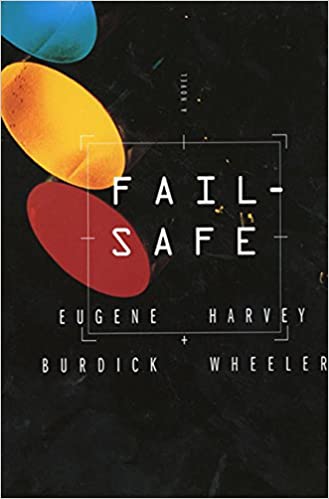 opens in a new windowFail-Safe by Eugene Burdick & Harvey Wheeler
opens in a new windowFail-Safe by Eugene Burdick & Harvey Wheeler
A series of technical glitches and miscommunications bring the United States and Russia to the brink of nuclear war. As both sides struggle to avert disaster, the unthinkable soon proves unavoidable, and omnicide can only be averted via massive mutual sacrifice.
Picked up at a garage sale when I was twelve, Fail-Safe served as my first exposure to the concept of mutually assured destruction. And I was fascinated.
Though the broad strokes of the plot are deceptively simple, it’s rather more detailed and character-driven than you’d think. At twelve I should have found the politicking in this book boring at best, yet I couldn’t put it down. Despite decades of separation and my utter ignorance of the Cuban Missile Crisis or even the Cold War, the authors still managed to convey the tension, hostility, bitterness, and mistrust of the era, capturing an eerie depiction of the dangerous precipice we lingered on for so long—all without any kind of caricature villain to do the heavy lifting. The antagonist in this case is very clearly circumstance—the reality that’s resulted from the decisions and actions of the characters and their predecessors, American and Russian alike.
Though plenty tragic, in retrospect it’s a shockingly optimistic tale given the time it was written in. Though today this would get shelved alongside Tom Clancy and the like, in my brain it occupies the same general slot as other unnervingly realistic radiative stories like How I Live Now, The Day After, and my all-time favorite disaster depiction: HBO’s Chernobyl.
opens in a new window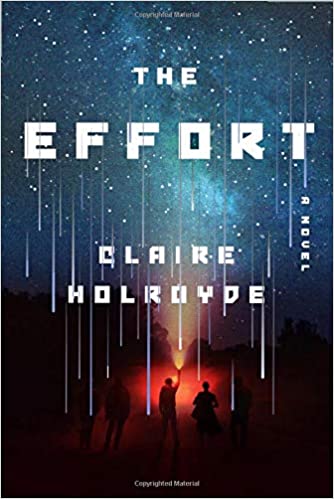 The Effort by Claire Holroyde
The Effort by Claire Holroyde
A massive comet is discovered to be on a collision-course with Earth, heralding an extinction-level event. While scientists from across the globe come together to devise a solution, civilization threatens to devolve around them.
A relatively new addition to the apocalyptic fiction genre, The Effort is the most recent book to have reminded me of my disaster movie lover roots.
The Effort is like if Karen Thompson Walker’s The Dreamers and the aforementioned Fail-Safe had a book baby, but swap the disease/nukes for a comet. It presents complicated sociopolitical issues through a disaster movie lens—featuring a sprawling cast and multiple storylines, each with its own unique set of crises and challenges to face.
The villain here is society itself, and the tentative, fragile instability of modern civilization that we take for granted every day. It’s another that fits nicely in the “hauntingly realistic” category. Contemplative above all else, it’s definitely the type of story with more questions than answers, leaving you with plenty to chew on.
As a kid, stories like these kickstarted my imagination more so than any other kind (and still do). They allow me to imagine a broader purview of conflict—one that doesn’t force a clear dichotomy of protagonist vs. antagonist, enabling a unique approach to storytelling you just can’t arrive at any other way.
Don’t get me wrong, I love me a well-realized villain—whether relatable, morally gray, lawful neutral, unrelentingly evil, you name it—but I’ll always hold a special place in my heart for these kind of high-stakes, all-is-lost narratives that are able to showcase humanity at its most stubborn and determined—and working together to achieve great things.
(Please fill the comments with your favorite novels lacking traditional villains (especially humanity vs nature) because I need more in my life, and you do too.)
J. S. Dewes is the author of opens in a new windowThe Last Watch, on sale 4/20/21. The second book in the series, opens in a new windowThe Exiled Fleet, hits shelves everywhere on 8/17/21.
Pre-order Rubicon here
opens in a new window opens in a new window
opens in a new window opens in a new window
opens in a new window opens in a new window
opens in a new window opens in a new window
opens in a new window
 opens in a new window
opens in a new window opens in a new window
opens in a new window opens in a new window
opens in a new window opens in a new window
opens in a new window

